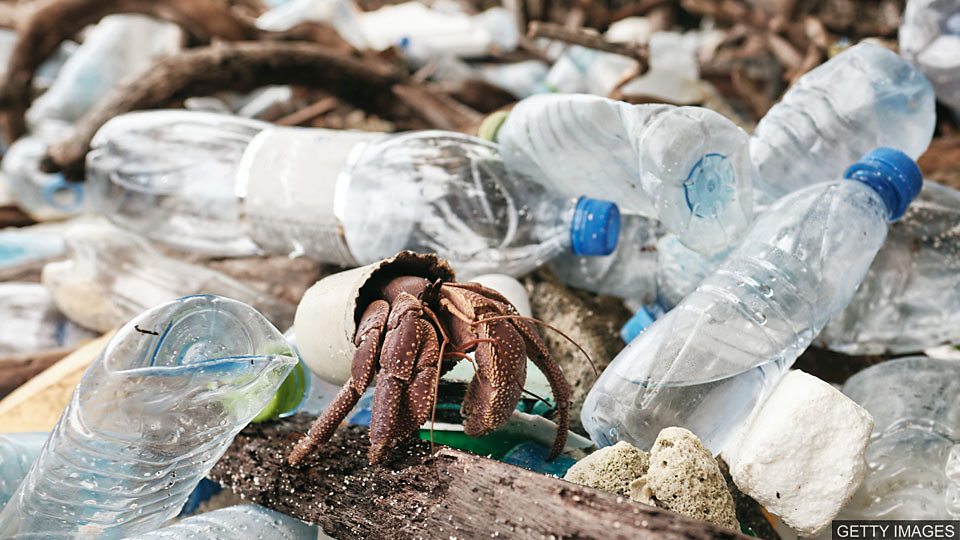在被称为 “太平洋垃圾带” 的开阔海洋地区,科学家发现了生活在塑料残渣上的海洋生物。
There are at least five hotspots of floating plastic in the global ocean.
全球海洋中至少有五个漂浮着塑料的热点地区。
These are gyres, where circulating currents trap debris. This one – the so-called Great Pacific Garbage Patch – is the largest, with almost 80,000 tonnes distributed over 600,000 square miles.
这些都是海洋环流地带,而环流会聚集残渣。其中,这个被称为 “太平洋垃圾带” 的区域最大,有8万吨垃圾分布在60万平方英里范围内。
The scientists teamed up with a charity that collects old fishing gear and other litter from the ocean, and gathered hundreds of plastic items to study in the lab.
科学家们与一家从海洋中收集旧渔具和其它垃圾的慈善机构合作,采捞了数以百计的塑料物品,送到实验室进行研究。
They found plants and animals, including anemones, tiny marine bugs, molluscs, and crabs on 90% of the debris they examined.
他们在90%的塑料残渣上发现了动植物,包括海葵、微小的海洋昆虫、软体动物和螃蟹。
As well as creating a semi-permanent floating habitat for coastal species in the open ocean, the researchers say all this plastic could be providing invasive species with rafts that allow them to cross the Pacific.
研究人员表示,这些塑料除了在开阔海洋中为沿海物种创造了一个半永久性的漂浮栖息地以外,也可以成为入侵物种的 “筏子”,使其穿越太平洋。
This, they say, is yet another unintended consequence of plastic pollution for the ocean.
他们指出,这是海洋塑料污染的另一个意想不到的后果。
词汇表
hotspots 热点地带
gyres 海洋环流
circulating 循环流动的
debris 碎片,残渣
litter 垃圾
anemones 海葵
molluscs 软体动物
rafts 筏子,浮垫
阅读理解:请在读完上文后,回答下列问题。
1. How many hotspots of floating plastic debris are thought to be in the ocean?
2. How big is the Great Pacific Garbage Patch?
3. What made up 90% of the debris scientists examined from the gyre?
4. What is one possible unintended consequence of plastic pollution mentioned?
答案
1. How many hotspots of floating plastic debris are thought to be in the ocean?
There are at least five hotspots of floating plastic in the global ocean.
2. How big is the Great Pacific Garbage Patch?
The so-called Great Pacific Garbage Patch is the largest, with almost 80,000 tonnes distributed over 600,000 square miles.
3. What made up 90% of the debris scientists examined from the gyre?
Scientists found plants and animals, including anemones, tiny marine bugs, molluscs, and crabs made up 90 % of the debris they examined.
4. What is one possible unintended consequence of plastic pollution mentioned?
The researchers say all this plastic could be providing invasive species with rafts that allow them to cross the Pacific.


 3342次下载
点击下载
3342次下载
点击下载
 2621次下载 点击下载
2621次下载 点击下载
 4734次下载 点击下载
4734次下载 点击下载
 1854次下载 点击下载
1854次下载 点击下载
 1391次下载 点击下载
1391次下载 点击下载
 1391次下载 点击下载
1391次下载 点击下载











